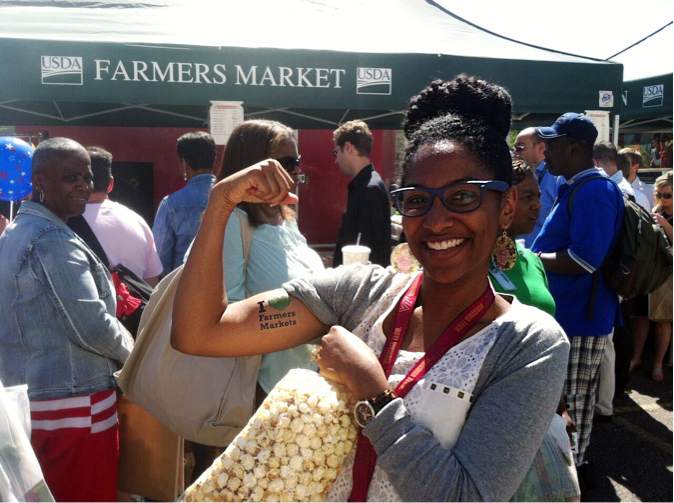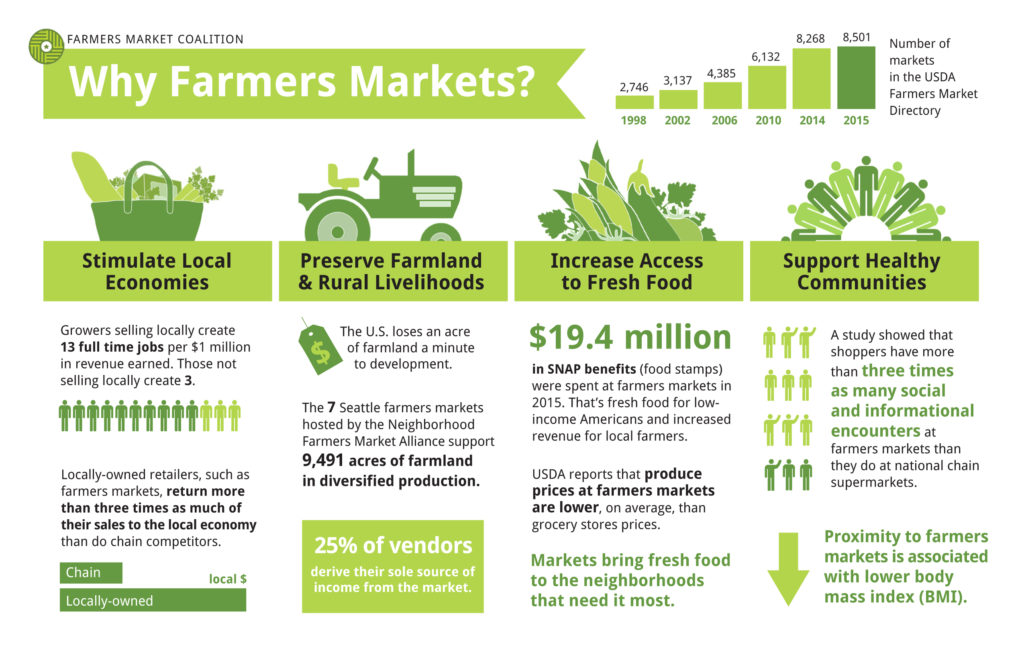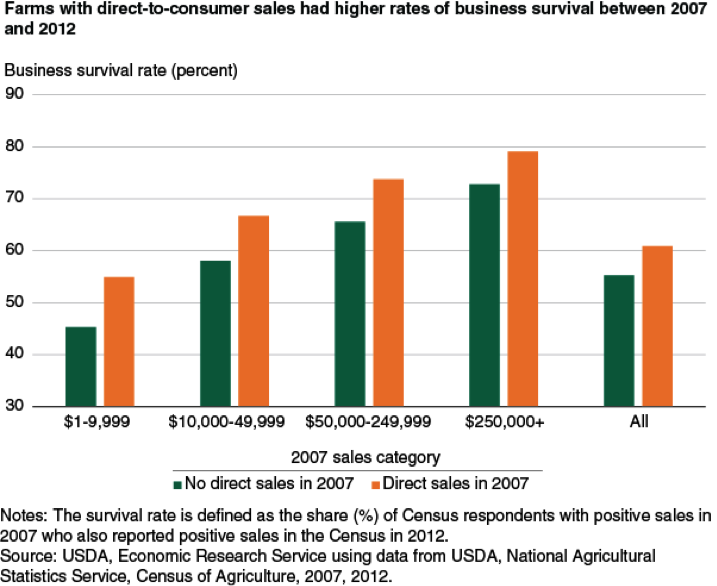
Editor’s Note: To kick off National Farmers Market Week, the National Sustainable Agriculture Coalition (NSAC) is excited to present this guest post from our member organization, the Farmers Market Coalition. National Farmers Market Week is from August 7-13, but many farmers’ markets go year round, so get out there and “shake the hand that feeds you”!
All this week, farmers and lovers of fresh, local food across America will celebrate National Farmers Market Week. Farmers markets are a vital and growing part of the American economy, serving as a linchpin in the chain that connects conscientious food shoppers with the men and women who grow their food. In the last decade, the number of farmers markets in the United States has jumped – from just over 4,000 to more than 8,500 today. Across America, 150,000 farmers now sell directly to shoppers at farmers markets, farm stands, and CSAs (community support agriculture subscriptions). Combined, these direct market farmers and ranchers represent a $1.3 billion industry, according to the U.S. Department of Agriculture (USDA).

The farmers, ranchers, and producers who make up America’s farmers markets are ambassadors of their regions; they provide the public with fresh, in season, and nutritious food, as well as serving as a window into the world of agriculture to their urban, suburban, and rural costumers. At the Farmers Market Coalition, a member organization of the National Sustainable Agriculture Coalition (NSAC), we believe that the growth of farmers markets represents a new and a growing interest in American agriculture, as well as an understanding on the part of consumers that they are important participants in America’s farm economy.
Good for farmers, good for consumers
Unlike many other food retail food establishments, farmers markets support farmers and shoppers in equal measure. Markets allow ranchers, farmers, and food entrepreneurs to test new products, diversify their operations, and keep a larger (and fair) share of consumer food dollars. Farmers markets also allow beginning farmers and ranchers to reach customers while keeping their costs low—a critical advantage in growing a new business. Largely as a result of these factors, farmers who market directly to consumers have higher rates of business survival than farmers who sell exclusively wholesale.
Shoppers love farmers markets for equally compelling reasons. First and foremost, produce and meat from farmers markets just tastes better! When farmers don’t have to worry about shelf life and shipping durability, they can focus on flavor and grow varieties of produce that shoppers can’t find at most grocery stores. Shoppers also know that when they get to know their farmers and “shake the hand that feeds them” they’re getting a personal guarantee of quality. The benefits of farmers markets don’t start and end with food, however. People also love farmers markets because they’re fun! The market is a great place to say “hi” to neighbors, swap recipes, and catch-up with friends—be honest, when was the last time you invited your friends to hang out in aisle 17 of the supermarket?
The role of policy
Policy decisions at the local, state, and federal level play an important role in the success and expansion of farmers markets and the direct marketing economy. Some of the most important programs to know include: the Farmers Market Promotion Program (FMPP) which was developed in 2002 by NSAC and then expanded through their activism into the Farmers Market and Local Food Promotion Program (FMLFPP) in 2014 Farm Bill, the WIC Farmers Market Nutrition Program (FMNP), and the Senior Farmers Market Nutrition Programs (SFMNP). These programs have helped to grow the direct marketing sector, promote local and regional products, and ensure that all shoppers—regardless of their income—have access to fresh, high-quality produce. One of the more recently developed programs, the Food Insecurity Nutrition Incentive program (FINI) (which was introduced in the 2014 Farm Bill) allows markets to offer incentives to Supplemental Nutrition Assistant Program (SNAP) recipients that can be used to purchase fresh fruits and vegetables. Thanks to the support of these important policies and programs, the work of farmers markets is respected on both sides of the aisle and the sector enjoys bipartisan support.
As we celebrate our tenth birthday, the Farmers Market Coalition looks forward to working with NSAC and our fellow coalition members to ensure that the next decade is as successful for farmers markets as the last ten years have been. Each and every one of you is also an important part of ensuring the ongoing success of our nation’s farmers markets. Get out to your farmers market this week (and every week!) to celebrate National Farmers Market Week. Chat with the farmers and producers at the market, meet your neighbors, and enjoy all the delicious food your region has to offer. You (and your local farmers) will be glad you did.
For extra farmers market supporter points, check out our National Farmers Market Week Media Kit and spread the word about farmers markets, or even invite your elected official to visit your farmers market during National Farmers Market Week!


